Climate change and Chinese farmers: Perceptions and determinants of adaptive strategies
ZHAI Shi-yan, SONG Gen-xin QIN Yao-chen YE Xin-yue, Mark Leipnik
1 College of Environment and Planning/Laboratory of Geospatial Technology for the Middle and Lower Yellow River Regions/Key Research Institute of Yellow River Civilization and Sustainable Development & Collaborative Innovation Center on Yellow River Civilization of Henan Province, Henan University, Kaifeng 475004, P.R.China
2 Key Laboratory of Geographic Information Science, Ministry of Education, East China Normal University, Shanghai 200241,P.R.China
3 Department of Geography, Kent State University, Kent 44242, USA
4 Department of Geography & Geology, Sam Houston State University, Huntsville 77340, USA
1. Introduction
Climate change has significantly impacted the pattern of precipitation and caused frequent extreme weather events in China, leading to natural disasters such as droughts and floods (IPCC 2007; Chenet al.2014; PDO 2014). Agriculture is generally considered one of the most vulnerable sectors directly affected by climate change (Chenet al.2016).China’s crop production and food security are beginning to be threatened by climate change (Tao and Zhang 2010; Taoet al.2014, 2015). As home to the world’s largest population and a generally self-sufficient food producer, any decline in Chinese agricultural production would have grave global consequences. The IPCC estimated China’s yields of rice,wheat, and maize (corn) will drop about 20–36% over the next 20 to 80 years (IPCC 2007). While these estimates are based on future scenarios, declines in key cereal production in important areas of China have been observed. Due to changes in precipitation and solar radiation in the past three decades, there has been a 1.2–10.2% reduction in wheat yields in southern China (Taoet al.2014).
Famers must adapt in order to mitigate the impacts of climate change (Deressaet al.2009). The Chinese government has paid considerable attention to the formulation and implementation of pro-adaptation policies.In 2007, the first National Comprehensive Plan was issued to encourage adaptation to climate change. This clearly stated that mitigation and adaptation were given equal weighting in policy formulation (NDRC 2007). In 2011, the National Strategic Plan for climate change presented the major tasks and plans for agricultural adaptation to climate change in China (SDTDet al.2011). In 2013, the National Development and Reform Commission issued a revised National Strategic Plan for adaptation to climate change that emphasized the importance of adaptation in the agricultural sector (NDRC 2013).
To date, the published adaptation studies of China’s agriculture with respect to climate change have focused on estimation of adaptation strategies based on models (Tao and Zhang 2010; Duet al.2013; Wanget al.2013, 2015;Taoet al.2014, 2015) and the driving forces involved (Liet al.2010; Gemmeret al.2011; Chenet al.2014, 2016;Yuet al.2014; Jinet al.2015). A large household survey of six provinces in China examined the impact of policies and social capital on farmers’ adaptation decisions related to drought (Chenet al.2014). The results indicated that early warnings facilitated the likelihood of successful adaptation.A challenge of adapting to droughts is that by the time costly strategies are adopted by farmers, droughts are often over,if not replaced by floods. In another study, the contributions of various adaptation options were explored based on a super-ensemble-based probabilistic projection system(Super EPPS) (Tao and Zhang 2010).
Farmers’ attitudes and risk perceptions were found to be greatly influenced by public policy and measures to adapt to climate change (Leiserowitz 2005; Lorenzoni and Pidgeon 2006; Liet al.2010; Chenet al.2014; Peteret al.2015). Agriculture was often the first sector to face the consequences of climate change. Therefore, whether farmers are willing to adopt new measures or improve their ability to adapt is crucial to mitigate the negative impacts of climate change. For the Chinese government to gain a better understanding of farmers’ perception of climate change, farmers’ ongoing adoption of adaptation measures,the existence of barriers to adaptation, and related social factors is essential. Therefore, the Chinese government can develop and implement policies to guide farmers to successfully adapt to climate change. Very few studies of the agricultural sector’s adaptation to climate change in China have been conducted. Consequently, this paper focuses on farmers’ perceptions, beliefs, and adaptation decisions in relation to climate change.
Agricultural planting seasons and methods, farming systems, soils, environmental and climatic conditions vary across China’s 34 provincial administrative regions.Agricultural adaptation to climate change is a dynamic process with a large variation in the region, physical and socioeconomic contexts. Hence, the formulation of a uniform adaptation policy that guides farmers in the whole of China to adapt to climate change is difficult.
Henan Province is in the middle and lower reaches of the Yellow River. It is the largest agricultural province and is a major grain-producing province in a nation largely self-sufficient in cereal production. Wheat, corn, and rice dominate the agricultural sector in Henan Province, with the total grain output from the province accounting for 10% of China’s output. Henan Province’s agricultural sector plays a pivotal role in the national grain production in China. In recent years, the agricultural sector in Henan Province has been adversely affected by drought, floods, and insects. In 2014, 23.1 million acres in Henan Province were affected by a severe drought, causing a direct economic loss of about 142 million USD to farmers (PhoenixNet 2014).
Henan Province is used in this paper as a case study to address the following research questions: (1) What are farmers’ perceptions and beliefs related to climate change?(2) What are the barriers to adaptation that farmers have experienced and what are the adaptation measures that farmers have taken? (3) What are the determinants affecting farmers’ decisions to adopt adaptive measures?
This paper is organized as follows: Section 2 describes the study area, outlines data collection methods and provides explanations for the driving forces affecting the farmers’ adaptation to climate change, Section 3 shows the farmers’ perception, beliefs in climate change, adaptation strategies and the model results, Section 4 discusses the implications of the results and future research plan,whilst Section 5 presents the conclusion and policy implications.
2. Data and methods
2.1. Study area
Henan Province covers an area of 167 000 km2, consisting of 18 cities (Fig. 1). It is located in central China and has a population of over 100 million people, of which, 51 million are farmers. Henan Province is in the transition zone between the subtropics and warm temperate zone with four distinct seasons. The annual frost-free period in the study area is about 180–240 days. The average annual temperature is between 12–16°C, with annual precipitation accumulations totaling 500–900 mm. Fifty percent of the annual precipitation is concentrated in the summer during the frequent heavy rains. Henan Province has mountains on three sides and plains in the east and center (Fig. 1), with the plain, mountain and hilly areas accounting for 55.7, 26.6, and 17.7% of the landmass, respectively. Elevation is from between 23.2 to 2 413.8 m above sea level, decreasing from west to east. The mountainous areas are mainly located in the west, north and south (Funiu, Taihang, Tongbai, and Dabie Mountains). The Huang-Huai-Hai Plain with fertile soil and heat resources is located in the middle east of Henan Province.
Agriculture is part of the most important industries in Henan Province, dominated by food and cash crops. The food crops are mainly wheat, corn, sweet potatoes, rice,sorghum, soybeans, millet, and mung bean. The cash crop is largely cotton. Since 2003, rainfall has showed an obvious downward annual trend. In addition, 49 632 800 ha were affected by natural hazards in Henan Province during the period from 1995 to 2012 and areas affected by drought and floods were 25 173 100 and 13 316 900 ha, respectively(NBSC 2015).
2.2. Data collection
In order to understand the farmers’ attitudes toward climate change and to identify current and potential household-level adaptation barriers and strategies, data were collected from a field survey conducted in 18 municipalities in Henan Province (Fig. 1). Survey sites were selected by taking into account the agricultural planting structure, farming system and climatic zones. Stratified random sampling was used to select the study areas. In each municipality, several villages were randomly selected to administer the questionnaire survey. Within each village, 10 farmers were randomly selected for in-depth interviews on whether climate change had affected their livelihood. The surveys were conducted from January 2013 to May 2014.
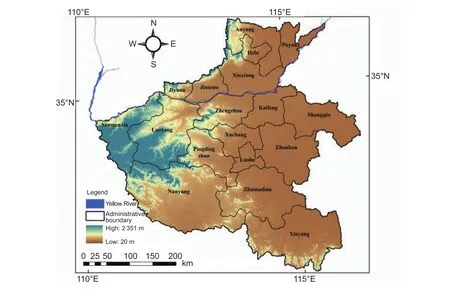
Fig. 1 Location, elevation and administrative boundary of Henan Province, China.
The questionnaire was composed of five major components: (1) demographic and professional profiles of farmers, including gender, age, years engaged in agriculture,educational attainment, total number of family members and sources of household income; (2) crop variety and amount of arable land; (3) farmers’ cognition on climate change, including perceptions of climate change, beliefs on climate change, knowledge of climate change causes and channels available to access climate change information; (4)Adaptation measures for mitigating climate change, such as building new infrastructure, increasing irrigation, increasing the use of pesticides and chemical fertilizers, adjustment of agricultural planting date, purchasing agricultural insurance,improving the farmland ecological environment, adopting new technology and adjusting crop variety; (5) barriers to adaptation such as the lack of an early warning system on climate change as well as the shortage of capital, land, and water. In total, 1 500 questionnaires were handed out to farmers in the study area and after validation. There were 1 133 effective questionnaires. The summary of the surveys is shown in Table1.
In addition, to examine the consistency of farmers’perception of climate change and actual climate change in Henan Province, 19 China’s national meteorological station records are used to calculate the actual climate change from 2003 to 2012 in Henan Province. The dataset contains daily precipitation and temperature data from 2003 to 2012, which can be obtained from China Meteorological Information Center.
2.3. Modeling approach
Independent and dependent variablesMany studies have suggested that farmers’ adaptation strategies are affected by their gender, age, agriculture experience, education degree,and farm income (Rosenzweig and Tubiello 2007; Deressa 2009; Moradiet al.2012; Bryanet al.2013; Chenet al.2014;Wang Y Jet al.2014). In addition, both crop variety and the amount of arable land were important in determining whether farmers were willing to address climate change (Liet al.2010; Wanget al.2015). As attitudes would influence behavior, previous studies also pointed out that the belief of climate change was an important factor in modeling farmers’adaptation strategies (Leiserowitz 2005; Lorenzoni and Pidgeon 2006; Rosenzweig and Tubiello 2007; Liet al.2010;Moradiet al.2012; Jinet al.2015). Information on climate change also motivated farmers to take multiple measures to adapt to climate change (Ajzen 1991; Vedwan 2006;Nhemachena and Hassan 2008; Deressa 2009; Wheeleret al.2013; Chenet al.2014; Danget al.2014).
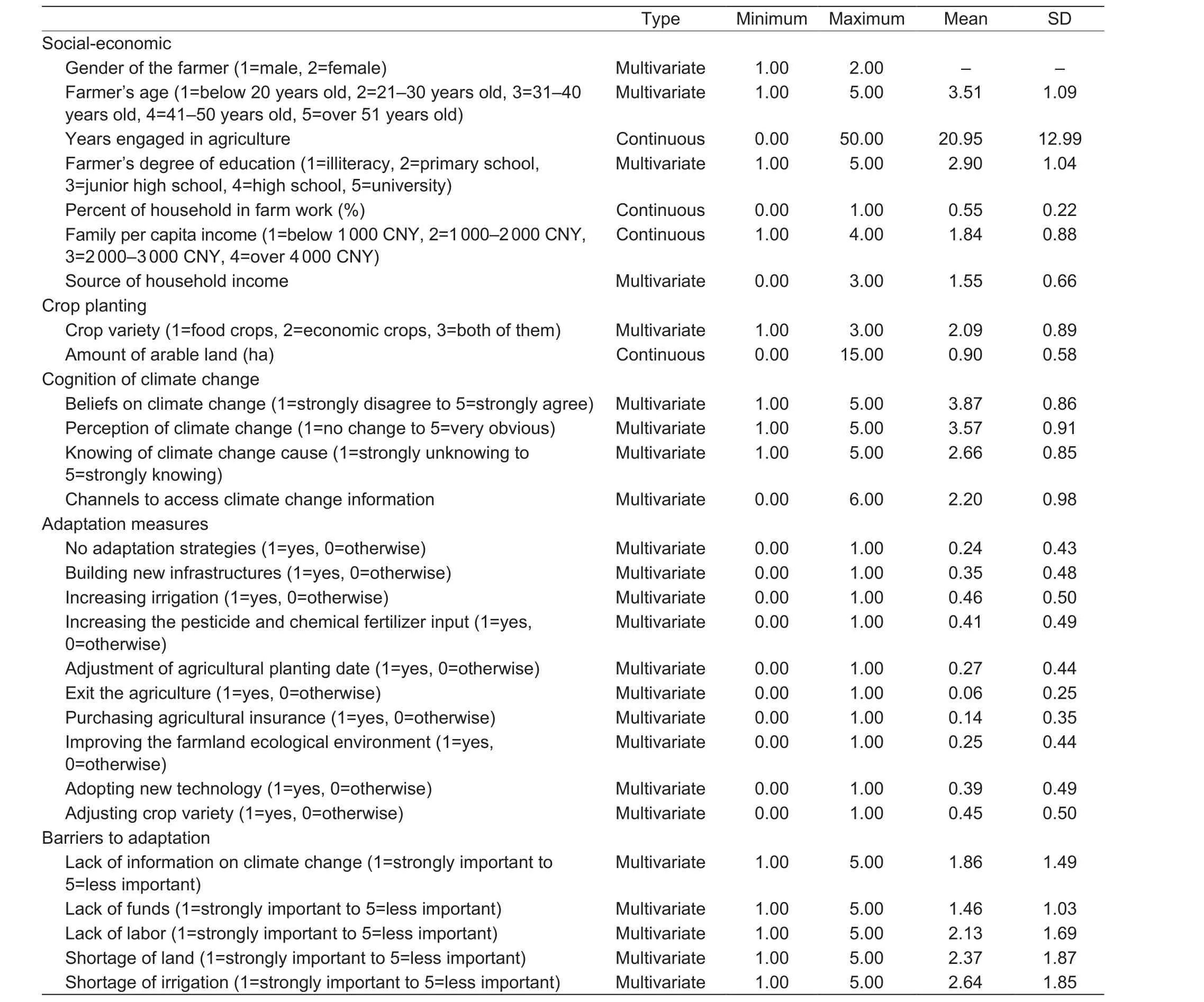
Table 1 Definition and summary statistics
Based on the literature review and focus group discussions, the following were chosen as independent variables: gender of farmer, age, years engaged in agriculture, education degree, percent of household in farm work, household income, crop variety, amount of arable land,beliefs of climate change, perception of climate change,knowledge of climate change cause and channel to access climate change information. Summaries of all variables and their expected relationship with adaptation strategies are listed in Table 1. Independent variables were divided into three categories. The variables in the first category were the farmer’s personal characteristics and socioeconomic status, such as gender, age, years engaged in agriculture,educational attainment, and percentage of household in farm work, household income and the income source. The variables in the second category included the structure of family crop planting and the amount of arable land owned by the family. The variables in the third category were about the cognition of climate change.
Dependent variables related to farmers’ adaptation strategies included adjusting planting structure, altering planting and harvest dates, building new infrastructure for irrigation, adopting latest technology for cultivation,increasing the in-take of fertilizer and irrigation, and purchasing agriculture insurance.
Analytical methodsIn this study, the basic assumption was that farmer’s adoption of adaptive measures was influenced by social-economic characteristics of farmers and their households, their perception of climate change, knowledge of causes of climate change and the influence of climate change information. Our survey indicated that faced with the challenge of climate change, farmers made multiple choices.In the first case, farmers either implemented adaptation measure(s) or did not adopt any adaptation measure(s).In this case,Yiis the dummy variable,Yi=1 denotes the farmer adopted adaptation measure(s), andYi=0 denotes the farmer did not adopt any measures or exited agriculture.So, when the dependent variable has only two values, a logistic model is the best for running the regression (Li and Wooldridge 2002; Wooldridge 2002; Nhemachena and Hassa 2008; Chenet al.2014) and the relationship between the farmers’ decision to take adaptation measures and independent variables was constructed as follows:

Where,Pdenotes the probability that a farmer with characteristicsXtaking adaptation strategies,Ydenotes the dependent variable, indicating whether farmers adopt adaptation measures,Xdenotes a set of explanatory variables influencing farmers’ adaptation decision-making, andβ0is the intercept,βidenote the vector of regression coefficients.
In addition, the majority of farmers took multiple types of adaptation measures at the same time. Therefore, to better estimate the impact of different factors on farmers’adaptation decisions, the farmers’ adaptation strategies were further classified into four mutually exclusive classes.The first class was the farmers who refused to take any adaptation measures or exit agriculture, the second class consisted of farmers that only adopted adaptation strategies on adjusting the agriculture tillage system (e.g., adjusting the planting structure and altering the planting and harvest date),the third class only adopted new agricultural technology,such as building new infrastructure for irrigation, adopting new technology for cultivation, increasing the in-take of fertilizer and irrigation, and purchasing agriculture insurance,whilst the fourth class included farmers who adopted both the adjustment of agriculture tillage system and applied new agricultural technology.
When the dependent variable has multiple mutually exclusive classes, the multinominal logit (MNL) model may be more suitable, allowing the analysis of decisions across more than two categories. It is also computationally simple(Deressa 2009; Nhemachena and Hassan 2008; Danget al.2014) and able to better separate the influences of personal characteristics of farmers, farmers’ belief of climate change, perception of climate change and barriers to farmers’ adaptation. The first category (no adaptation)was the reference state in this study. The probability that a farmer with characteristicsxtaking any adaptation strategiesPcan be specified as:

WhereYdenotes the dependent variable, which can take one of four values. WhenYis set to 1, farmers do not take any adaptation strategy. If a farmer only adopts the adjustment of agriculture tillage system,Yis set to 2. If a farmer only takes the new agricultural technology,Yis set to 3. If a farmer adopts both the adjustment of agriculture tillage system and applying new agricultural technology,Yis set to 4. In addition,Xdenotes the set of explanatory variables that impact the farmer’s adoption of adaptation measures, andβis the vector of regression coefficients specific to adaptation strategy optionmin the MNL model.The coefficients of the base category are set equal to zero, so the other estimated coefficients are just the scale factor. According to eq. (2), the parameters estimated by the MNL model only provide the direction of the effect of the independent variables on the dependent variable, but the estimated coefficients would not indicate the actual magnitude of change or probabilities. The marginal effects of the explanatory variables are given as:

Eq. (3) calculates the expected change in the probability of a particular adaptation strategy being made with respect to a unit change in an explanatory variable.
Logit regression and MNL regression were both run in the Stata 11.0. The estimated coefficients are given in Tables 2 and 3.
3. Results
The process of farmers’ adaptation decision-making is complicated (Rosenzweig and Tubiello 2007; Liet al.2010; Chenet al.2014; Yuet al.2014; Jinet al.2015) and the aim of this study is to find the driving forces affecting farmers’ decisions to adopt adaptive measures. Perceiving climate change is the first step in the two-step procedure of adaptation (Deressaet al.2011; Danget al.2014), so firstly it was necessary to understand whether climate change was perceived by farmers and then, assess whether climate change was observed by farmers by asking openended questions (Liet al.2010; Leiserowitz 2005; Jinet al.2015). Understanding farmers’ beliefs on climate change is of great importance for analyzing farmers’ adaptation decisions. In addition, some adaptation measure options and barriers were given to determine whether farmers had made decisions. Finally, the farmers’ responses to climate change were analyzed and the determinants influencing their adaptation behavior were summarized.
3.1. Farmers’ perceptions of climate change
Farmers have been directly impacted by climate change and they are more sensitive to climate change and extreme weather events than others (Rosenzweig and Tubiello 2007;Moradiet al.2012). Hence, examining farmers’ perceptions of climate change is essential before their adaptive response behavior can be understood (Vedwan 2006; Danget al.2014; Wang Y Jet al.2014). In this study, climate change is defined as the perceived changes of average temperature,average rainfall, incidences of the drought, and heat waves over the last 10 years. Therefore, it was an overall perception of climate change from respondents, based on their experience in the last 10 years, not for a specificweather event in the last 10 years. A 5-point scale was utilized to measure farmers’ perceptions of climate change,with 1 as a very low degree and 5 as a high degree. Farmers’perception of climate change is shown in Fig. 2.
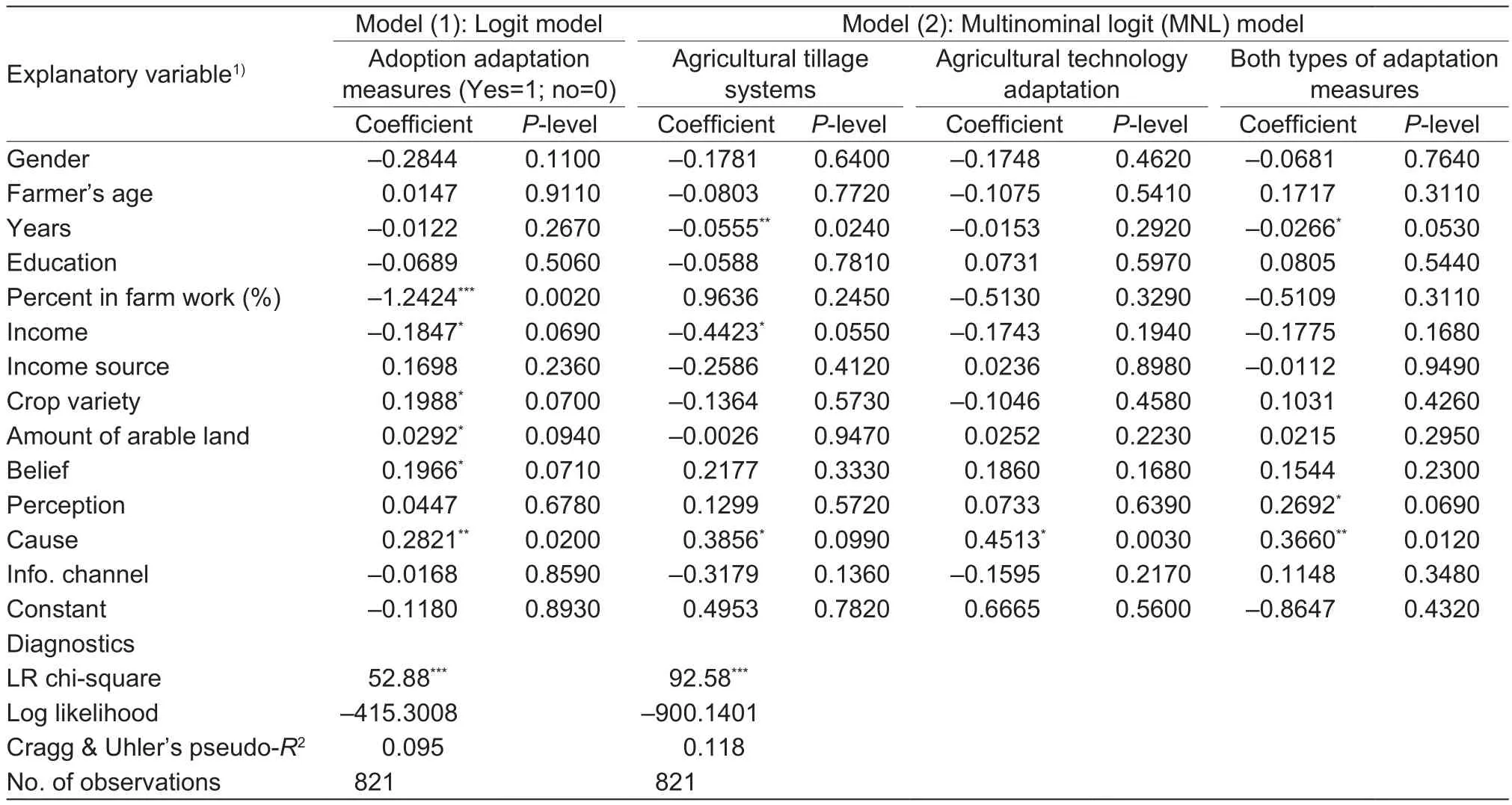
Table 2 Parameter estimation results of the multinomial logit climate change adaptation model
More than half of respondents perceived climate change.Overall, 31.4% of respondents choose the “little obvious”option, with a small number of respondents selecting“not obvious” or “no change”, the ratios being 9.8 and 1.6%, respectively. When farmers were asked about their observations of climate change, they argued that they had experienced changes in rainfall variability, particularly shifts in timing and distribution of rainfall, extreme weather events and natural disasters over the past 10 years. Most respondents observed many different phenomena caused by climate change; 58.1% of respondents had observed decreasing precipitation and 54.5% of respondents argued that the average temperature was increasing and that the freezing phenomenon had almost disappeared in winter.Most importantly, some respondents stated that the starting dates of sowing, germination and dormancy for winter wheat were delayed. On the contrary, the dates of greenup, anthesis and maturity were ahead in the past 10 years.Along with a rising average temperature, the problem with wheat pests was also escalating. In addition, about 22.3% of respondents thought that the frequency of extreme weather events, such as drought, floods and hail, had increased.
Furthermore, we selected annual average precipitation and temperature as key indicators for measuring the actual climate change. The trend of annual average precipitation and mean temperature for Henan Province during 2003–2012 is plotted in Fig. 3. The linear regression model in Fig. 3-A illustrated that from 2003 to 2012, the annual average precipitation showed a decreasing trend. By contrast, the annual mean temperature from 2003 to 2012showed a slight increasing trend (Fig. 3-B). Therefore, most farmers’ perceptions of climate change were consistent with the actual precipitation and temperature change trend in Henan Province.
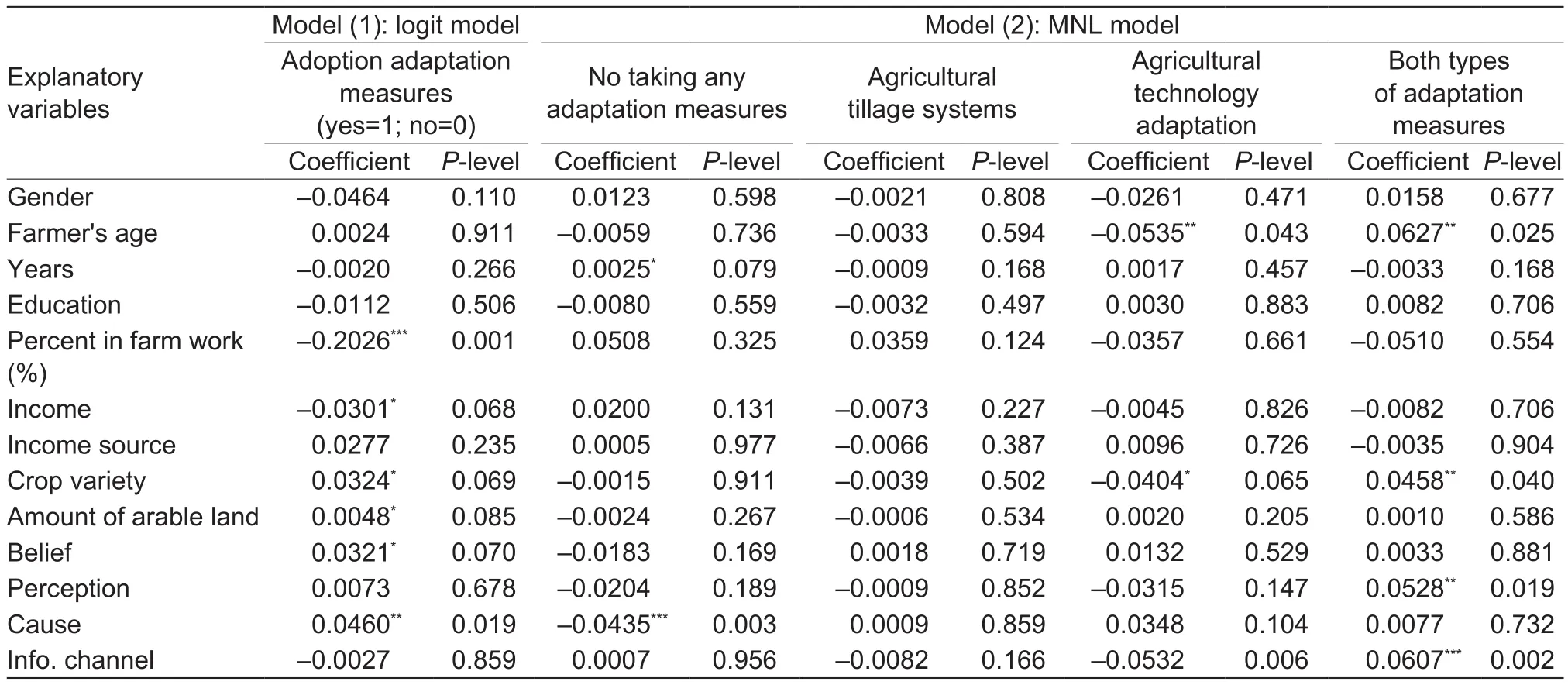
Table 3 Marginal effects of the multinomial logit climate change adaptation model
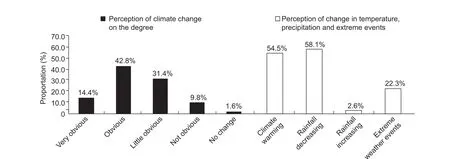
Fig. 2 Farmers’ perception of climate change. Source: compiled by authors from survey data; total number of respondents is 1 133.
3.2. Farmers’ beliefs on climate change
The focus group discussions revealed that some farmers still did not believe in climate change even though they had perceived an increase in average temperatures, a decrease in average precipitation, or an increase in the frequency of extreme weather events. They expressed that drought and flooding events were normal phenomenon, not caused by climate change. Some senior farmers even thought that all of this is a God’s arrangement.
Their belief in climate change directly affected farmers’adaptation strategies of climate change/vulnerability. In this study, belief of climate change was defined as “to what extent, climate change poses a risk on your life” and a 5-point scale was used to measure farmers’ belief on climate change (with 1=strongly disagree, 5=strongly agree). Fig. 4 shows the respondents’ answers regarding their belief of climate change; 22.0% of respondents strongly agreed that climate change has occurred and posed a risk, 48.3% chose the “agree” option and 22.7% argued that climate change is occurring, but they were not sure about whether it posed a risk to their life. A small number of respondents selected“disagree” or “strongly disagree”, with the ratios being 6.4 and 0.6%, respectively.
In addition, with the rapid development of China’s economic and urban-rural integration, many village farmlands near the city have been used to accommodate urban growth. For example, Rice Township located on the shore of the Yellow River, Henan Province, was known for growing rice, but in recent years, most of the farmers in the Rice Township have stopped planting rice. One reason is that many farmlands have been expropriated by the government to construct factories. In addition, there was a lack of water for cultivating rice and planting rice is costly in terms of time and labor, with low returns. Farmers were more willing to engage in non-agricultural production activities for a better lifestyle. These farmers did not care about climate change and the impact of climate change on agriculture, let alone take measures to adapt to climate change. Consequently, these respondents argued that climate change was not related to their life, choosing“unsure” or “disagree”. In addition, weather data did not show any obvious characteristics of climate change in some regions in the past 10 years, so the respondents in such areas considered that “climate change is not occurring, and it does not pose any risk to their life”.

Fig. 3 Annual average precipitation trend during 2003–2012 in Henan Province, China.
3.3. Farmers’ adaptation strategies and barriers to adoption
It was also anticipated that the survey would reveal whether farmers had taken some strategies to deal with climate change if it had posed a risk to their livelihoods. Farmers were enquired as to whether they had adopted adaptation measures to respond to the impact of climate change. Most farmers answered that they had taken various measures to adapt to the climate change; whether to adopt measures was based on the farmers’ perceptions, beliefs and knowledge of climate change. Additionally, the most important premise conditions for the farmers to take measures were the proportion of agriculture income that accounted for the total household income and the local natural environment conditions. The adaptation strategies included building new infrastructures for irrigation, increasing the use of pesticides and chemical fertilizers, adjusting agricultural planting methods and density, purchasing agricultural insurance,improving the farmland ecological environment, adopting new technology, and planting other crops (Fig. 5).
Among the major adaptation methods identified in the study, increasing irrigation and adjusting crop variety were the most commonly used, whereas purchasing agricultural insurance and quitting agriculture were the least adopted adaptation strategies. Moreover, increasing the use of pesticides and fertilizers as well as adopting new farming technologies were also introduced to respond to the impact of climate change. Among the surveyed farmers, there were still those who did not adopt any strategy in response to climate change.
In fact, in China, there has been a mature agricultural insurance policy, such as the Agriculture Insurance Act issued by the State Council in 2012, which was implemented in China’s 31 provinces, autonomous regions,and municipalities directly (CIRC 2012). Agricultural insurance is an active method to get agricultural risks and help farmers to manage the risks from natural disasters resulted from climate change (Wang J Xet al.2014).However, the majority of farmers are not familiar with these agricultural insurance policies, consequently, few farmers purchased agricultural insurance to address climate change.Purchasing agricultural insurance was ranked as the least important adaptation strategy. These adaptation measures were similar to those found in other studies (Rosenzweig and Tubiello 2007; Deressaet al.2009; Bryanet al.2013; Chenet al.2014). Due to differences among regions regarding regional climates, natural conditions, economic and cultural conditions, the adaptation strategies were expected to be different between regions.
It should also be noted that farmers who claimed to have observed climate change gave many reasons for their failure to adapt effective measures for climate change, including lack of information, lack of money, shortage of labor,shortage of land, and poor potential for irrigation (Fig. 6).The survey indicated that there were two important barriers,lack of money and lack of information. These findings were consistent with the study of the Nile Basin in Ethiopia(Deressaet al.2009).
During the interview, many farmers told that their arable land had been requisitioned by the government due to urbanization. Environmental pollution poses a serious threat to agricultural planting and security, and the respondents stated that pollution from chemical plants made them give up planting wheat, rice or vegetables. Currently, the market price of agricultural produce is very low in comparison to the production costs, so farmers are reluctant to spend money and time to work in agriculture.
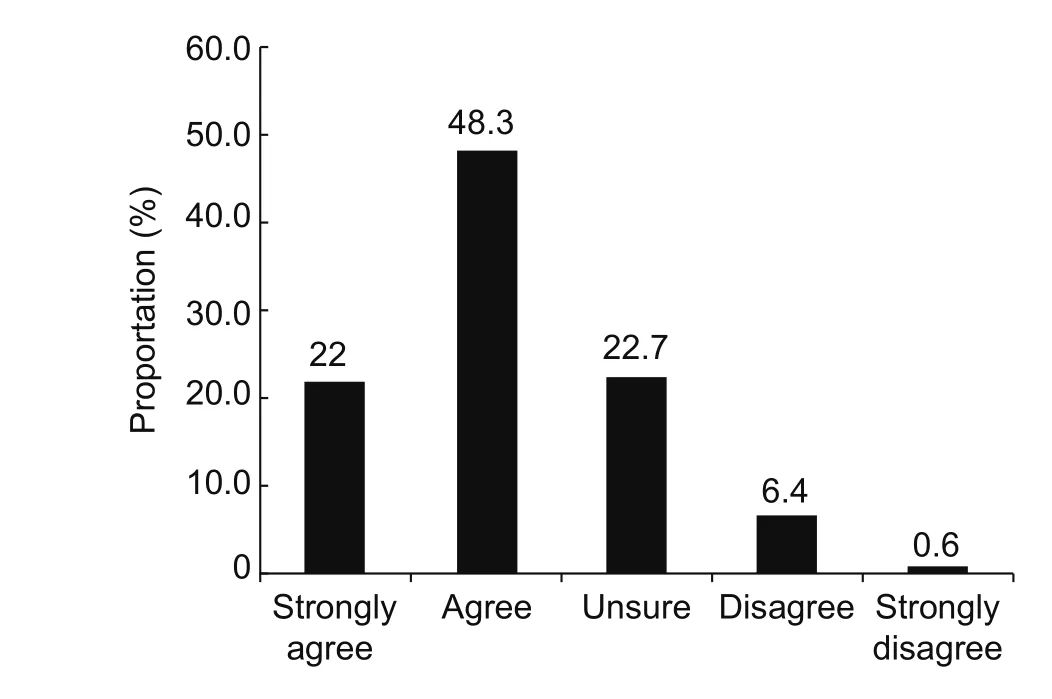
Fig. 4 Farmers’ belief of climate change. Source: compiled by authors from survey data. Total number of respondents is 1 133.
3.4. Estimation results of the model
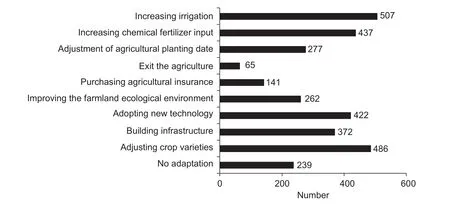
Fig. 5 Farmers’ adaptation strategies to climate change. Source: compiled by authors from survey data. Total number of respondents is 1 133.
The estimation results of the logit model and MNL model for this study are shown in Table 2. The model chi-squared values were in almost identical for both models. The likelihood ratio chi-square of 52.88 with aP-value of 0.0000 for Model (1) and 92.58 with aP-value of 0.0000 for Model(2) indicate that Model (1) and Model (2) have good fit. The Cragg & Uhler’s pseudoR2is 0.095 for Model (1) and 0.118 for Model (2). The model shows a reasonable fit, with no serious multicollinearity (as verified by correlation analysis and VIFs, values of VIFs<2). Hence, the test values indicate that the multivariate analysis was valid based on the data.Table 3 shows the estimation of the marginal effect model along with the levels of statistical significance.
For example, years of engaging in farming was negatively correlated with farmers only taking agricultural tillage systems adaptation measures and adopting both types of adaptation measures (Table 2, Model (2)). This indicates that the longer farmers are engaged in agriculture, the less likely they are to adopt adaptation strategies. It may be that experienced farmers were more likely to engage in traditional farming methods and not willing to make any change, such as adjustment of agricultural planting date, adjusting the crop variety, or adopting new technology.
Results in Model (1) showed that the coefficient for the percentage of household engaging in agricultural activities was negative and significant, demonstrating that the higher percentage of persons engaging in agricultural activities,the more reluctant they are to adopt adaptation measures.When controlling other factors, a unit increase in the percentage of household would result in a 20.2% decrease in the probability of taking adaptation measures against climate change (Table 3).
The household income of surveyed farmers had a negative and a statistically significant impact on adoption of adaptation measures. A unit increase in the household income of surveyed farmers would result in a 3.0% decrease in the probability of taking any adaptation options (Table 3).It can be inferred that the greater the household income, the lower chance of adapting against climate change, possibly because wealthier farmers pay less attention to climate change adaption.
The crop variety was positively correlated with farmers’taking adaptation measures. The results suggested that if farmers not only grew cash crop but also food crops, they were more willing to take adaptation measures to reduce the adverse effects of climate change. Moreover, the amount arable land had a positive and statistically significant impact;the more arable land a farmer owned, the better the chance of the farmer taking some measures to adapt to climate change. For instance, when controlling all other factors,a unit increases in the amount of arable land results in a 0.48% (Table 3) increase in the probability of agricultural technology adaptation.
More importantly, the estimation results indicated that beliefs had a significantly positive impact on the likelihood of adopting any adaptation measures. It can be inferred from Table 2 that farmers with a stronger belief in climate change were more likely to adapt to climate change through the adoption of different strategies. A unit increase in the belief in climate change increased the probability of taking adaptation measures by 3.2% (Table 3). These results confirm that attitude decides action; if farmers believe that climate change has taken place, and has already impacted on their lives. They are more willing to take adaptive measures.
Knowledge of the causes of climate change was also positively related to the likelihood of adapting to climate change. When farmers knew the real causes and results of climate change, they were more likely to take measures to adapt to climate change. This is because they realized the harm induced by climate change, and understood what human behavior could contribute to climate change.They were willing to adapt to climate change to avoid loss.After controlling all the other factors, a unit increase in the knowledge of climate change causes would result in increasing the probability of adopting adaptation measures by 4.6%.
As expected, farmers who obviously perceived climate change (e.g., average temperature increasing, precipitation decreasing and frequency of extreme evens increasing) were more likely to adopt different strategies to adapt to climate change. In Table 2, Model (2) showed that the perceiving climate change has a positive and statistically significant effect on taking both types of adaptation measures. After controlling for the impact of other factors, increasing their perception of climate change can significantly promote the adoption of adaptation measures against climate change. A unit increase in the perception of climate change increased the probability of using two types of adaptation measures by 5.3% (Table3).
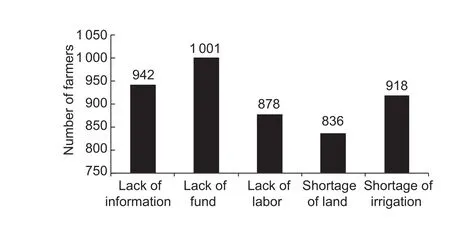
Fig. 6 Barriers to adaptation. Source: compiled by authors from survey data. Total number of respondents is 1 133.
4. Discussion
Generally, richer farmers are more financially able to take measures to address climate change. Jinet al.(2015)argued that richer farmers were more likely to grow other crops and to invest more money in agriculture for climate change. In addition, Deressaet al.(2009) pointed out that there was a positive relationship between the income of farming households and farmers taking various adaption measures (e.g., changing planting dates and using different crop varieties). However, this study demonstrated that household income is negatively associated with adopting adaption measures, in contrast to the traditional view. During the survey process, it was found that household income included both farm income and off-farm income, with off-farm income accounting for a large proportion of the household income. In addition, due to the large population in Henan Province, farmers own little arable land, less than 0.07 ha/person. Coupled with the impact of low food prices, farmers cannot afford their livelihoods while depending only on farm income. Therefore, to improve their lives, farmers were more likely to devote more time to work away from their hometown or to run their own business. According to richer farmers, agriculture loss caused by climate change would not heavily impact their lives, so, they were less likely to take measures to reduce the loss caused by climate change.If this phenomenon continues, China’s food security will be negatively impacted by climate change and economic development. How to resolve the sustainable agricultural problem under the pressure of climate change and economic development will be the focus of future research.
Government support will improve the farmer’s capability to deal with drought (Chenet al.2014; Wang Y Jet al.2014).For instance, local governments can arrange staff to guide farmers on how to adjust planting date and crop structure,as well as helping farmers to learn how to build or maintain irrigation infrastructure. In addition, financial support was an important means to improve farmers’ adaptive capability(Deressaet al.2009; Liet al.2010; Chenet al.2014; Wang Y Jet al.2014). Farmers with access to financial support would be more likely to take adaptation measures against climate change. However, survey results indicated that only 12.4% of farmers have purchased agriculture insurance to reduce loss caused by climate change. Majority of respondents replied that they did not know agriculture insurance policy. If they participated in agriculture insurance,to what extent, they could avoid the loss brought about by climate change. But, agricultural insurance policy has been considered as one of the most useful and important risk mitigation means to decrease farmer’s economic losses(Foudi and Erdlenbruch 2012; Pandaet al.2013; Falcoet al.2014; Jinet al.2016). Recently, weather index insurance based on the observed value of a specified meteorological station was formed and preferred by local farmers and insurers (Jinet al.2016). It was relatively new insurance product and has not been widely implemented in China.And, it remains unclear how these agriculture insurance policy affects farmers’ adaptive behavior. This could serve as a follow-up study topic.
Farmers’ and agricultural officers’ perceptions and knowledge of climate change were essential to account for the adaptation response (Lorenzoni and Pidgeon 2006; Vedwan 2006). This is because effective adaptation measures need effort from both government officers and farmers. Interestingly, farmers and agricultural officers have different perspectives on barriers to farmers’ adaptation to climate change (Danget al.2014). However, in this study,agricultural officers were not interviewed to explore their perceptions and knowledge of climate change. In China,there are many administrative departments of agriculture set at different levels of the administrative area, which provide some support and make several policies for agriculture.Hence, in a future study, it is crucial to determine the agricultural officers’ perceptions and knowledge of climate change.
Numerous studies have indicated that the belief of climate change has a significant and positive relationship on adaptation behavior (Deressaet al.2009; Chenet al.2014). Wheeler and Zuo (2013) suggested that there was an endogenous relationship between planned climate change and belief. Farmers that believed in climate change were more willing to take adaptation strategies to face current or future climate change (e.g., changing crop mixes, adopting more efficient infrastructure and reducing irrigated area, etc.). However, these farmers did not want to implement more risky or maladaptive strategies (e.g.,expanding their farm, increasing the irrigation area and purchasing permanent water). In our models, the results verified that attitude towards climate change indeed influenced adaptation behavior, which is consistent with previous studies (Vedwan 2006; Wheeler and Zuo 2013).Nonetheless, our study only considered the relationship between actual adaptation behavior and belief/attitude/knowledge. There were no questions in relation to the future of adaptive behavior, thus, endogeneity was not tested in this study. Future surveys examining the relationship between the attitudes towards climate change and planning adaptation behavior must consider the endogeneity. During survey, it was found that some respondents would like to take some measures to adapt to climate change even if they did not perceive obvious change in previous years.Because they believe that climate change would pose a risk to their life in the future. Therefore, understanding of farmers’ belief of climate change should be paid more attention in future surveys.
How to measure the farmer’s perception of climate change and whether farmers’ perception was accurate were both important for assessing farmers’ adaptation.Many studies utilized some questions in survey to access farmers’ perception of climate change, such as perception changes in the average temperature and average rainfall,incidences of extreme weather events over the last 10 years (Deressaet al.2009; Mertzet al.2009; Jinet al.2015; Belayet al.2017). In this study, based on historical climate in Henan Province, we adopted the similar method to examine the farmer’s perception of climate change. Results indicated that the above method was effective. During interview, some respondents told that during corn growth period, the incidences of irrigation increased in previous years. Niles and Mueller (2016) argued that how irrigation influences farmer perceptions of climate change was of great importance. In order to accurately test farmers’ perception of climate change, it may be useful to design some more specific questions in future survey, such as change of crop planting data, incidences of irrigation, length of dry season(Ayanladeet al.2017), in addition to average temperature and average rainfall, incidences of extreme weather events.
Checking whether farmers’ perceptions consistent with actual climate change is very important to better understanding farmers’ perceptions of climate change and providing policy suggestions (Houet al.2015, 2017).In this study, we selected two key indicators of annual average precipitation and temperature to measure the actual climate change. Results indicated that most farmers’perceptions of climate change were in agreement with the actual meteorological data in Henan Province. Houet al.(2017) found that over half of the sample farmers perceived the increasing drought severity during the past 10 years, which was consistent with the actual drought trends in their counties. Houet al.(2015) examined whether farmers’ perceptions were consistent with the actual mean temperature trend and what factors impact the consistency of farmers’ perception. Empirical results showed that social networks would improve a farmer’s ability to correctly perceive temperature changes and farmers with a large farm size were more likely to be able to consistently perceive temperature change.
The existing literature related to what determines farmers’ individual adaptation strategies to cope with climate change challenges indicated that the MNL model was effective and made it easy to analyze how farmers’personal characteristics, local physical conditions, social network, policy and technical support have an impact on their adaptation decisions (Rosenzweig and Tubiello 2007;Deressaet al.2009; Moradiet al.2012; Bryanet al.2013;Chenet al.2014; Wang Y Jet al.2014). Additionally, the major advantage of the MNL is that it can disentangle the contribution possibilities of each factor into the independent variable (Li and Wooldridge 2002; Wooldridge 2002).Hence, the MNL model was adopted in this study to separate the degree of influence of farmers’ personal characteristics,belief of climate change, and barriers to implement adaptation measures to deal with the negative impact of climate change. The MNL model was found to have many advantages, such as clear structure, simple calculation, and output results that are easily explained. However, it was felt that the MNL model approach would be ineffective in some cases if the artificial classification of farmers’ adaptation measures was not reasonable. The premise of the MNL model approach is that the options of the dependent variable are discrete and mutually exclusive. Generally, farmers would take many adaptation measures simultaneously.Therefore, in order to avoid excessive response categories to perform the MNL model, researchers tend to divide the adaptation strategies into several categories. For example,Chenet al.(2014) divided the adaptive measures into engineering measures (e.g., changing crop production inputs, adjusting crop planting or harvesting time) and non-engineering measures (e.g., purchasing water pumps,building cisterns, investing in wells, and maintaining channels). The influence of explanatory variables would differ for each adaptation option (Chenet al.2014), thus,researchers may not identify the key factors influencing farmers’ adaptation decisions. Therefore, researchers should pay more attention to artificial grouping adaptation options before applying the MNL model.
The relationship, between channels to access climate change information and farmers’ taking adaptation measures was not significant, but the lack of information is a very important factor hindering farmers’ adopting adaptation measures. The channels to access climate change was defined as the many ways farmers can obtain information about climate change and include TV, radio, newspaper,internet and social network. In other studies, the information factor was classified into two categories, such as information provided before drought only, and during drought only. The results showed that information is a very important factor to promote farmers to take adaptation measures against drought (Chenet al.2014), thus, in the following study,researchers should not only focus on the channel to access climate change information, but also consider the reliability of information and transmission of informationviasocial network.
5. Conclusion and implications
This study analyzed the farmers’ perceptions, beliefs,adaptation strategies and barriers to climate change,and the determinate factors that affected the choices of adaptation methods to climate change based on extensive field surveys conducted in Henan Province of China. The results showed that the farmers surveyed perceived climate change differently in different regions. Approximately 57%of respondents perceived climate change over the past 10 years, with 31.4% not sure and 11.4% did not perceive climate change. In addition, over half (70.3%) of the surveyed farmers believed that their livelihoods were impacted by climate change. Therefore, farmers who believed in climate change had adopted adaptation measures to respond to the impact of the climate change. These adaptation strategies included building new infrastructures for irrigation, increasing pesticide and chemical fertilizer input, adjusting agricultural planting, exiting from the agriculture business, purchasing agricultural insurance, improving the farmland ecological environment, adopting new technology, and adjusting the crop variety they planted. However, there were also many recognized barriers to adapting to climate change, such as the lack of information, lack of money, a shortage of labor,a shortage of land, and the poor potential for irrigation.
The MNL model was used to estimate the factors that influenced farmers’ adaptation choices against climate change. Further analysis suggested that the length of time engaged in farming, the percentage of persons engaged in agricultural activities, and household income were both negatively impact on adoption of adaptation measures against climate change. By contrary, the crop variety, amount of arable land, belief of climate change, the knowledge of the causes of climate change and perception of climate change could play an important role in the adoption of such measures, which is positively correlated with farmers’ taking adaptation measures.
There were several potential policy implications from the results of this study. Attitude determines actions, better education of farmers on the facts, phenomena, causes, and impacts of climate change and improving farmers’ access to the information before and during the climate change would help to promote farmers’ perception of the risk and opportunity with respect to climate change. In support of the government, younger farmers with more arable land could be encouraged to adopt new agricultural technology(e.g., building new infrastructure for irrigation and adopting new technology for cultivation) to alleviate the loss caused by climate change and use it as an opportunity to improve agricultural production. For farmers with less income, the government may want to consider subsidizes to increase their ability to adapt to climate change by means of capital and technology. By contrast, farmers with higher income should be guided by the government to take further measures to address climate change. In addition, access to climate change information would improve farmers’adaptation capacity. Nonetheless, the government should not only provide general climate change information, but also pay greater attention to the timing of information provided and information dissemination network. Existing rural agricultural producers could be organized into farming communities, which could be helpful in communicating climate change information and their experience of adaption measures.
Acknowledgements
This study was supported by the National Natural Science Foundation of China (41301149), the National Major Scientific Research Project, China(2012CB955800), the China Postdoctoral Science Foundation of the Fifty-Seventh Batch of Funds(2015M570626), the Open Research Fund of the Key Laboratory of Geospatial Technology for the Middle and Lower Yellow River Regions, Ministry of Education, China(JOF 201601), the Open Research Funding Program of Key Laboratory of Geographic Information Science, Ministry of Education (KLGIS2014A03), the Science and Technology Innovation Team Support Plan Funded for University in Henan Province, China (16IRTSTHN012).
Ajzen I. 1991. The theory of planned behavior.Organizational Behavior and Human Decision Processes, 50, 179–211.
Ayanlade A, Radeny M, Morton J F. 2017. Comparing smallholder farmers’ perception of climate change with meteorological data: A case study from southwestern Nigeria.Weather and Climate Extremes, 15, 24–33.
Belay A, Recha J W, Woldeamanuel T, Morton J F. 2017.Smallholder farmers’ adaptation to climate change and determinants of their adaptation decisions in the central Rift Valley of Ethiopia.Agriculture & Food Security, 6, 24–37.
Bryan E, Ringler C, Okoba B, Roncoli C, Silvestri S, Herrero M. 2013. Adapting agriculture to climate change in Kenya:Household strategies and determinants.Journal of Environment Management, 114, 26–35.
Chen H, Wang J X, Huang J K. 2014. Policy support, social capital, and farmers’ adaptation to drought in China.Global Environmental Change, 24, 193–202.
Chen S, Chen X G, Xu J T. 2016. Impacts of climate change on agriculture: Evidence from China.Journal of Environmental Economics and Management, 76, 105–124.
CIRC (China Insurance Regulatory Commission). 2012.Reports on the Progress of Agricultural Insurance. [2017-07-07].http://www.gov.cn/zwgk/2012-11/16/content_2268392.htm (in Chinese)
Dang H L, Li E, Bruwer J, Nuberg I. 2014. Farmers’ perceptions of climate variability and barriers to adaptation: Lessons learned from an exploratory study in Vietnam.Mitigation& Adaptation Strategies for Global Change, 19, 531–548.
Deressa T T, Hassan R M, Ringler C. 2011. Perception of and adaptation to climate change by farmers in the Nile Basin of Ethiopia.The Journal of Agricultural Science, 149, 23–31.
Deressa T T, Hassan R M, Ringler C, Alemu T, Yesuf M. 2009.Determinants of farmers’ choice of adaptation methods to climate change in the Nile Basin of Ethiopia.Global Environmental Change, 19, 248–255.
Du Y D, Cheng X H, Wang X W, Hui A, Duan H L, He J, Wu X X. 2013. A review of assessment and adaptation strategy to climate change impacts on the coastal areas in South China.Advances in Climate Change Research, 4, 201–207.
Falco S D, AdinolfiF, Bozzola M, Capitanio F.2014. Crop insurance as a strategy for adapting to climate change.Journal of Agricultural Economics, 65, 485–504.
Foudi S, Erdlenbruch K. 2012. The role of irrigation in farmers’risk management strategies in France.European Review of Agricultural Economics, 39, 439–457.
Gemmer M, Wilkes A, Vaucel L M. 2011. Governing climate change adaptation in the EU and China: An analysis of formal institutions.Advances in Climate Change Research,2, 1–11.
Hou L L, Huang J K, Wang J X. 2015. Farmers’ perceptions of climate change in China: The influence of social networks and farm assets.Climate Research, 63, 191–201.
Hou L L, Huang J K, Wang J X. 2017. Early warning information,farmers’ perceptions of, and adaptations to drought in China.Climatic Change, 141,197–212.
IPCC (Intergovernmental Panel on Climate Change). 2007.Summary for policy-makers.In: Climate Change 2007:Synthesis Report.Contribution of Working Groups I,II and III to the Fourth Assessment Report of the Intergovernmental Panel on Climate Change. Cambridge University Press,London, England.
Jin J J, Gao Y W, Wang X M, Nam P K. 2015. Farmers’ risk preferences and their climate change adaptation strategies in the Yongqiao District, China.Land Use Policy, 47,365–372.
Jin J J, Wang W Y, Wang X M. 2016. Farmers’ risk preferences and agricultural weather index insurance uptake in rural China.International Journal of Disaster Risk Science, 7,366–373.
Leiserowitz A. 2005. American risk perceptions: Is climate change dangerous?Risk Analysis, 25, 1433–1442.
Li C, Ting Z, Rasaily R G. 2010. Farmer’s adaptation to climate risk in the context of China.Agriculture and Agricultural Science Procedia, 1, 116–125.
Li Q, Wooldridge J M. 2002. Semiparametric estimation of partially linear models for dependent data with generated regressors.Econometric Theory, 18, 625–645.
Lorenzoni I, Pidgeon N F. 2006. Public views on climate change:European and USA perspectives.Climatic Change, 77,73–95.
Mertz O, Mbow C, Reenberg A, Diouf A. 2009. Farmers’perceptions of climate change and agricultural adaptation strategies in rural Sahel.Environmental Management, 43,804–816.
Moradi R, Koocheki A, Nassiri M M, Mansoori H. 2012.Adaptation strategies for maize cultivation under climate change in Iran: Irrigation and planting date management.Mitigation and Adaptation Strategies for Global Change,18, 265–284.
NBSC (National Bureau of Statistics of China). 2015.Statistical Yearbook of Henan Province. China Statistics Press, China.(in Chinese)
NDRC (National Development and Reform Commission of China). 2007.China’s Plan Response to Climate Change.National Development and Reform Commission, China.(in Chinese)
NDRC (National Development and Reform Commission of China). 2013.China’s Response to Climate Change Policy and Action - 2013 Annual Report. National Development and Reform Commission, China. (in Chinese)
Nhemachena C, Hassan R. 2008. Determinants of African farmers’ strategies for adapting to climate change:Multinomial choice analysis.African Journal of Agricultural and Resource Economics, 21, 83–104.
Niles M T, Mueller N D. 2016. Farmer perceptions of climate change: Associations with observed temperature and precipitation trends, irrigation, and climate beliefs.Global Environmental Change, 39, 133–142.
Panda A, Sharma U, Ninan K N, Patt A. 2013. Adaptive capacity contributing to improved agricultural productivity at the household level: Empirical findings highlighting the importance of crop insurance.Global Environmental Change, 23, 782–790.
PDO (People’s Daily Online). 2014. Henan suffered its worst drought over the 63 years. [2015-10-02]. http://pic.people.com.cn/n/2014/0802/c1016-25389454.html (in Chinese)
Peter D, Howe M M, Jennifer R, Marlon Leiserowitz A. 2015.Geographic variation in opinions on climate change at state and local scales in the USA.Nature Climate Change, 5,596–603.
PhoenixNet. 2014. Area of 23.1 million mu caused by drought disaster in Henan Province. [2015-10-02]. http://hn.ifeng.com/fazhi/baoguang/detail_2014_07/22/2633172_0.shtml(in Chinese)
Rosenzweig C, Tubiello F N. 2007. Adaptation and mitigation strategies in agriculture: An analysis of potential synergies.Mitigation and Adaptation Strategies for Global Change,12, 855–873.
SDTD, MSTPRC, CAMC (Social Development and Technology Division, Ministry of Science and Technology of the People’s Republic of China, China’s Agenda 21 Management Center). 2011.Studies on National Strategy of Climate Change Adaptation. Science Press, China. (in Chinese)
Tao F L, Zhang Z. 2010. Adaptation of maize production to climate change in North China Plain: Quantify the relative contributions of adaptation options.European Journal of Agronomy, 33, 103–116.
Tao F L, Zhang Z, Xiao D P, Zhang S, Rötter R P, Shi W J, Liu Y J, Wang M, Liu F S, Zhang H. 2014. Responses of wheat growth and yield to climate change in different climate zones of China, 1981–2009.Agricultural and Forest Meteorology,189, 91–104.
Tao F L, Zhang Z, Zhang S, Rötter R P. 2015. Heat stress impacts on wheat growth and yield were reduced in the Huang-Huai-Hai Plain of China in the past three decades.European Journal of Agronomy, 71, 44–52.
Vedwan N. 2006. Culture, climate and the environment: Local knowledge and perception of climate change among apple growers in northwestern India.Journal of Ecological Anthropology, 10, 4–18.
Wang C L, Shen S H, Zhang S Y, Li Q Z, Yao Y B. 2015.Adaptation of potato production to climate change by optimizing sowing date in the Loess Plateau of central Gansu, China.Journal of Integrative Agriculture, 14,398–409.
Wang J, Huang X, Zhong T, Chen Z. 2013. Climate change impacts and adaptation for saline agriculture in north Jiangsu Province, China.Environmental Science & Policy,25, 83–93.
Wang J X, Huang J K, Jun Y. 2014. Overview of impacts of climate change and adaptation in China’s agriculture.Journal of Integrative Agriculture, 13, 1–17.
Wang Y J, Huang J K, Wang J X. 2014. Household and community assets and farmers’ adaptation to extreme weather event: The case of drought in China.Journal of Integrative Agriculture, 13, 687–697.
Wheeler S, Zuo A, Bjornlund H. 2013. Farmers’ climate change beliefs and adaptation strategies for a water scarce future in Australia.Global Environmental Change, 23, 537–547.
Wooldridge J M. 2002.Econometric Analysis of Cross Section And Panel Data. MIT Press, MA, USA.
Yu Q Y, Wu W B, Liu Z H, Verburg P H, Xia T, Yang P, Lu Z J,You L Z, Tang H J. 2014. Interpretation of climate change and agricultural adaptations by local household farmers:A case study at Bin County, Northeast China.Journal of Integrative Agriculture, 13, 1599–1608.
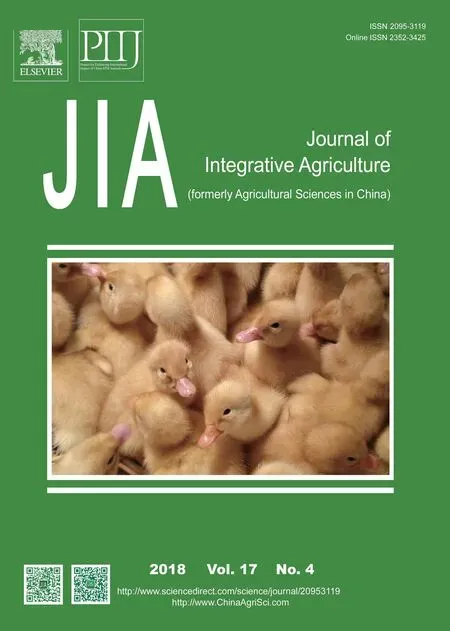 Journal of Integrative Agriculture2018年4期
Journal of Integrative Agriculture2018年4期
- Journal of Integrative Agriculture的其它文章
- Estimating the average treatment effect of adopting stress tolerant variety on rice yield in China
- lmmunogenicity and protective efficacy of DHBV DNA vaccines expressing envelope and capsid fusion proteins in ducks delivered by attenuated Salmonella typhimurium
- Effects of conditioners (single-layer, double-layer and retentionconditioner) on the growth performance, meat quality and intestinal morphology of growing and finishing pigs
- Sub-lethal effects of Beauveria bassiana (Balsamo) on field populations of the potato tuberworm Phthorimaea operculella Zeller in China
- Regionalization of wheat powdery mildew oversummering in China based on digital elevation
- Streptomyces sp. RP1A-12 mediated control of peanut stem rot caused by Sclerotium rolfsii
